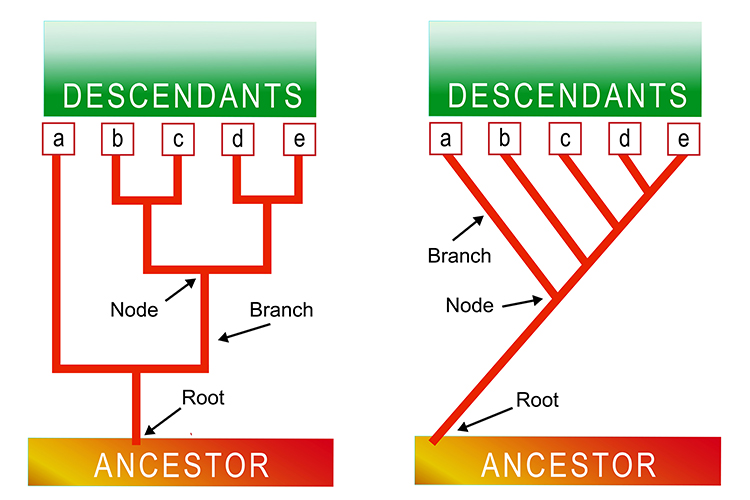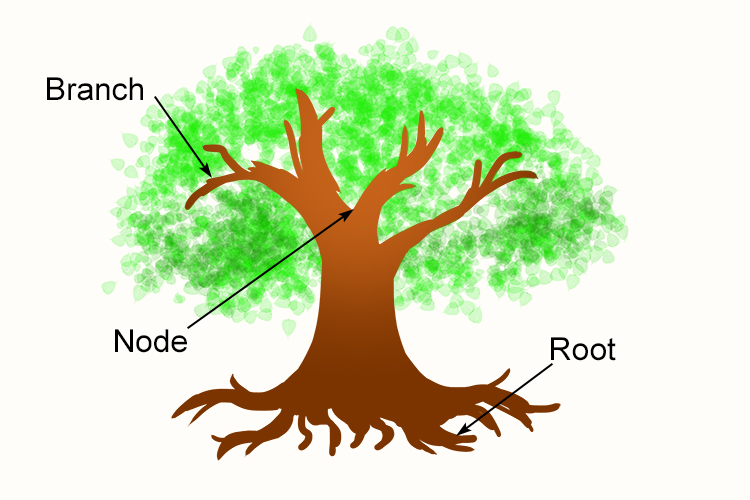Phylogenic tree – Branch diagram
Anatomy and morphology is used to predict evolutionary relationships. A branching diagram showing evolutionary relationships is called a phylogenic tree (pronounced: file-o-genic).

No one was looking at the manager’s branch diagram (branching diagram) as his flies were low on his jeans (phylogenic) while he pointed to the tree.

A phylogenic tree (like the one above) is just like an ordinary tree (like the one below), with the root at the base of the tree and branches forming at nodes and going off in different directions.

Root.
The root is the base or start of the tree. The species at the root is the common ancestor of all the subsequent species within the tree.
Node.
A node is where the tree splits into two or more new branches. This represents what is called a divergence or speciation event, which is where a population has separated into two or more species that can no longer interbreed with each other.
The node also represents the common ancestor of any subsequent species that branches off from it.
Branch.
Branches are the lines of the family tree which show the evolutionary path, and therefore the relationship between an ancestor and its descendants.
Descendants.
Descendants are the resulting offspring, species, genus or other taxa that can trace their lineage back to an earlier common ancestor.
One example of a phylogenic tree is as follows:

Humans did not evolve from chimpanzees. Instead they share a common ancestor from which the two species split and diverged about 6 million years ago.
Of all the great apes orangutans are the most distant relatives of humans as they diverged from a common ancestor around 13million years ago.




